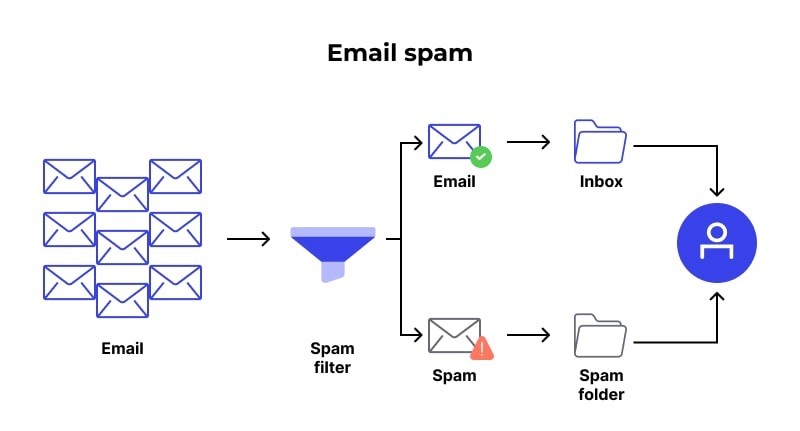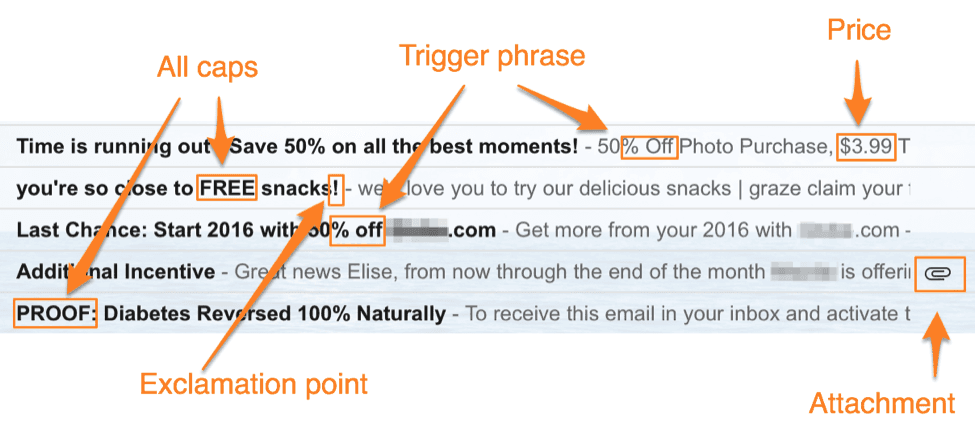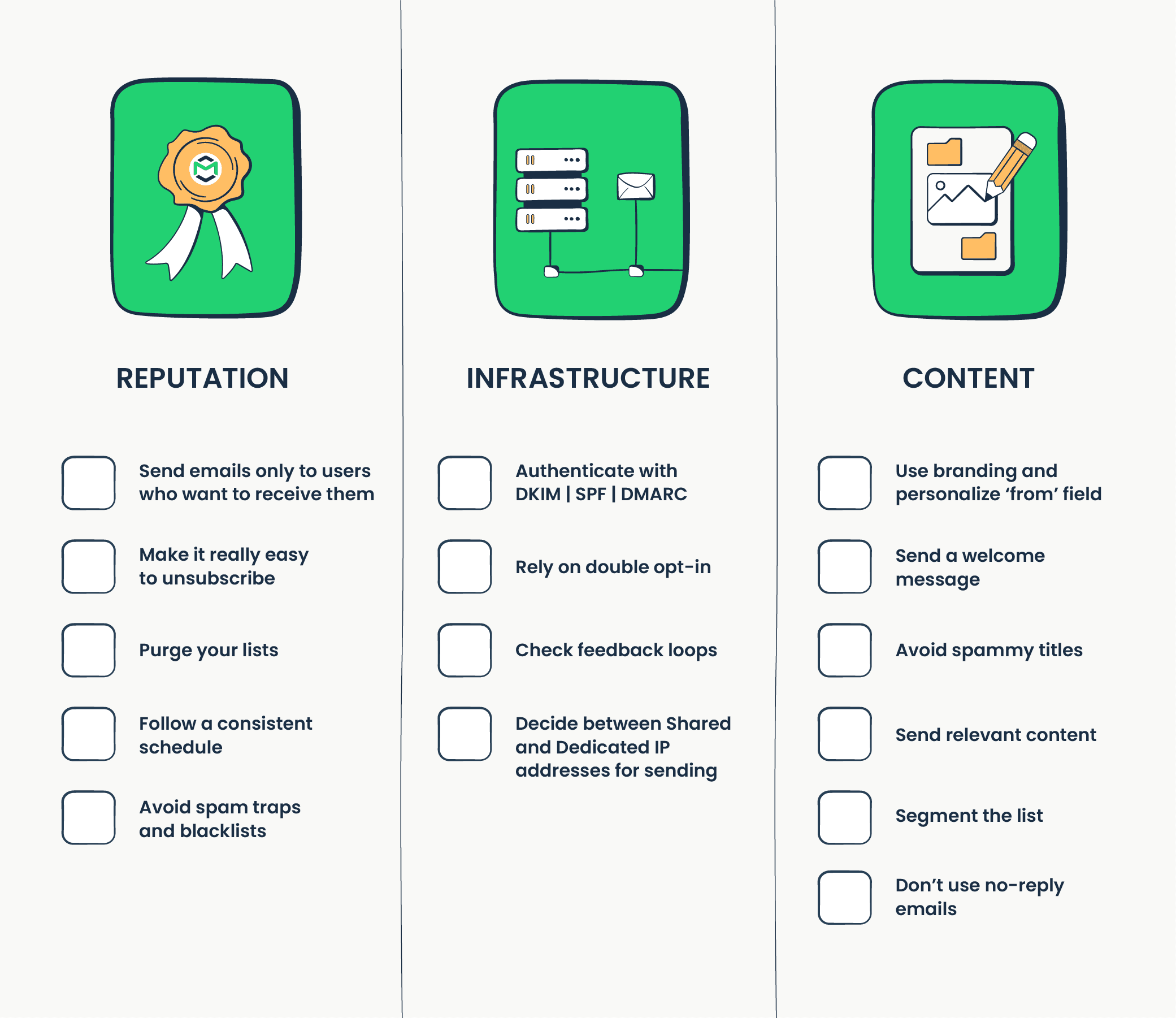101 Spam-Trigger Words Destroying Your Cold Email Campaigns (And How to Fix It)

Tony Baltodano
Jul 19, 2024
101 Spam-Trigger Words Destroying Your Cold Email Campaigns (And How to Fix It)
We all hate spam. The last thing we want is for our emails to end up in the dreaded spam folder, never to be seen again. But unfortunately, that happens all too often. Why? Spam filters.
These automated programs are constantly scanning emails for "spam trigger words" that hint at questionable content.
With the right knowledge, you can steer clear of dangerous terms and keep your emails out of the spam folder.
In this blog post guide, we'll cover:
How email spam filters work
What is a spam score and why it matters
The complete list of 101 common spam trigger words
Actionable tips to avoid spam words and improve deliverability
Let’s dive into it!
How Email Spam Filters Work

Spam filters analyze each incoming email and assign a "spam score" based on various factors:
Sender Reputation
One of the main things spam filters look for are blacklisted IP addresses and domains. Senders with poor reputations are more likely to be flagged as spam.
You can check your current IP and domain reputation using tools like MxToolbox and Talos Intelligence.
To build up a good sender reputation, be sure to use email authentication systems like SPF, DKIM, and DMARC. These help verify your identity as a legitimate sender.
Other tips include:
Monitoring spam reports and unsubscribes
Being transparent in your unsubscribe process
Sending from a dedicated IP used only for email
Follow best practices like list segmentation and personalization
Engagement
Providers also look at user interaction metrics like open and click rates. If many users delete or ignore your emails, it can hurt your sender's reputation.
Links In Emails
Adding links raise spam flags and make your emails heavier. So, avoid them. Even on your signature.
Spam Words
And of course, spam filters look for specific words and phrases commonly used in spam emails. Avoiding these "spam trigger" terms is key.
Advanced spam filters go beyond keywords and analyze writing style, tone, and context as well. The focus should be crafting emails that engage subscribers and provide value.
What is a Spam Score?
Spam scores are calculated by email providers to determine the "spamminess" of an email, ranging from 1 to 10.
0 to 2 - Very good, likely to reach the inbox
3 to 5 - Borderline, may go to inbox or spam
6+ - Likely to be marked as spam
this is how email providers rank your emails
You can check your spam score using a tool like Glockapps. It will rank your email based on your reputation as a sender.
Maintaining a good spam score is crucial for ensuring your emails reach the inbox, safeguarding your sender reputation, and boosting the engagement rates.
A good spam score helps avoid being blacklisted by ISPs and protects your brand image.
List of 101 Common Spam Trigger Words
Act now
Apply now
As seen on
Buy direct
Call now
Click below
Click here
Deal
Do it today
Exclusive deal
Get it now
Important information regarding
Instant
Limited time
New customers only
Offer expires
Order now
Please read
See for yourself
Sign up free
Take action
This won’t last
Urgent
While supplies last
Winner
Winning
You are a winner
You have been selected
100% free
100% satisfied
Additional income
Be your own boss
Best price
Big bucks
Billion
Cash bonus
Cents on the dollar
Consolidate debt
Double your income
Earn Money
Eliminate bad credit
Extra income
Expect to earn
Fast cash
Financial freedom
Free access
Free Consultation
Free Gift
Free hosting
Free info
Free Investment
Free Membership
Free Money
Free preview
Free Quote
Free trial
Full refund
Get out of debt
Get paid
Giveaway
Guaranteed
Increase sales
Increase traffic
Incredible deal
Lower rates
Lowest price
Make Money
Million dollars
Miracle
Money back
Once in a lifetime
One time
Pennies a day
Potential earnings
Prize
Promise
Pure profit
Risk-free
Satisfaction guaranteed
Save big money
Save up to
Special Promotion
Bulk email
Direct email
Direct marketing
Email harvest
Email marketing
Mass email
Multi-level marketing
No catch
No cost
No credit check
No fees
No gimmick
No hidden costs
No hidden fees
No interest
No investment
No obligation
No purchase necessary
No questions asked

Tips to Avoid Spam Words in Your Emails
Segment your lists based on user engagement to focus on highly engaged subscribers.
Monitor spam reports and inbox placement tests to identify issues early.
Avoid ALL CAPS and excessive punctuation like !!! which raises red flags.
Send from a reputable domain to build up a good sender reputation.
Carefully review all copies for hidden spam triggers before sending.
Use double opt-in signup flows to verify subscriber consent.

FAQs
What happens if my email gets marked as spam?
If your emails get flagged as spam, engagement metrics will drop. Subscribers may also unsubscribe or report your messages, hurting the sender's reputation. Continued issues can lead to blacklisting.
How often should I monitor my spam score and reports?
Check your spam score at least monthly, or more often if sending large campaigns. Review spam reports after each significant email sent to catch problems early.
What's the best way to avoid landing in the spam folder?
Combining tactics like list segmentation, authentication, monitoring metrics, avoiding spam words, and sending valuable content are most effective to maximize inbox placement.
Use a tool like Mission Inbox to maximize your email deliverability with automated warm-up processes and intelligent email verification.
Convinced? Elevate Your Email Strategy!
Related posts
MissionInbox v3: Revolutionized Email Delivery Platform
We're proud to introduce MissionInbox v3, a complete platform rebuild that delivers unprecedented reliability, speed, and scalability for your email communications.

Steve Baltodano
Google’s October 15th Security Updates: How Gemini AI Will Transform Cold Emailing and Deliverability
Learn how Google’s October 15th security updates and Gemini AI will transform email filtering and cold emailing strategies. Stay ahead with personalized, value-driven content.

Tony Baltodano
Understanding Gmail Spam Alerts in 2024 – What They Mean and How to Solve Them
Decode Gmail spam alerts and learn how to fix them to improve your email deliverability. Discover solutions for common alerts like "Messages Marked as Spam" and prevent your emails from ending up in the spam folder.

Tony Baltodano



